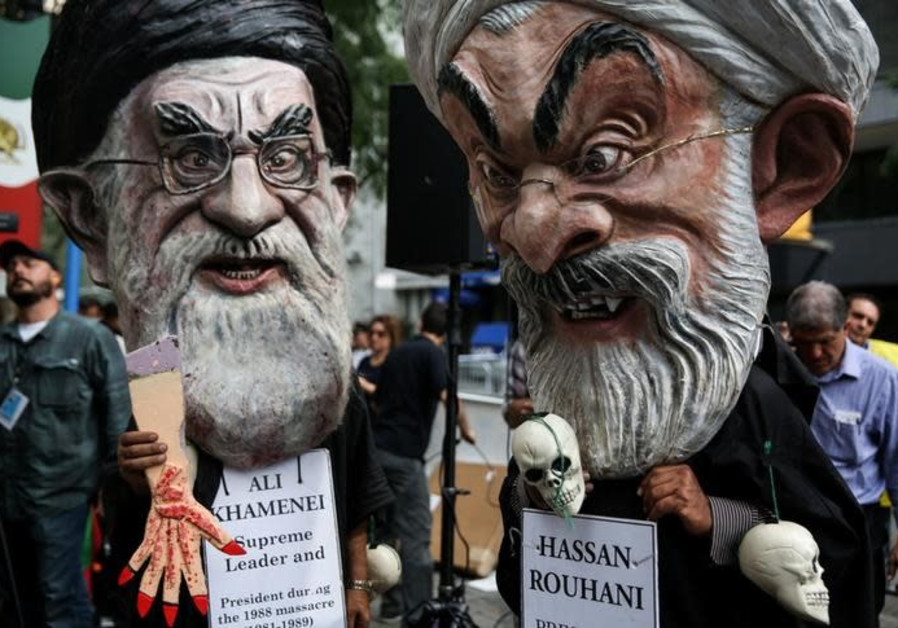The following are five ways to look at the protests emerging in the Islamic Republic in debates among experts.

Since the protests that broke out in Iran in late December, analysts and commentators have struggled to comprehend what has motivated them and how to interpret what is happening. Interpretation has also been burdened by the past, including questions about the Iran Deal, the past US administration and previous Iranian protests.
The following are five ways to look at the protests emerging in debates among experts. What is clear is that there is no consensus on Iran and that there is tremendous pressure to craft one or two narratives in the media about who is protesting and why.
Is Iran like other countries with protests?
Esfandyar Batmanghelidj of the Europe Iran Forum wrote on December 30 that the west should be wary of bandwagoning on this as a “revolution in the making that needs support and solidarity.” He argued that Iran’s protests are comparable to those in Brazil, Mexico and Thailand. Iran is not a special case, he argued, and that the protests occurred because of a regime that failed to support civic institutions, but failed to do so.
Frida Ghitis, a world affairs columnist at CNN, disagrees. “Anyone who thinks Iran is a normal middle-income country, comparing to Mexico, Brazil, Thailand, is blind to the stark reality that Iran is, in fact, extremely different. It uses its funds to fight wars in other countries, imprisons political candidates, tells women what to wear.”
Iran vs. Saudi Arabia
Iran’s regime has accused Saudi Arabia of supporting the protests. Supreme National Security Council head Ali Shamkhani has claimed that 27% of the hashtags for the protests in Iran were created in Saudi Arabia.
The Saudi Arabia vs. Iran narrative has dominated some circles of discussion. A writer who has written on Iran at The National Interest says “I’m receiving a lot of comments from non-Iranians saying that the protests in Iran are being fomented by US/Israel/Saudi Arabia.” He says the comments come from “professionals from within Western political and economic institutions.” Alireza Nader, Senior Policy analyst at Rand Corporation, argues that the protests were instead spontaneous and transcend the concept of “reformists vs. hardliners,” and are unrelated to Saudi Arabia.
Who is driving what?
Carnegie Endowment Senior Fellow Karim Sadjadpour argues that commentators are missing some important points. He writes on January 1 that while in 2009 around 1 million Iranians had smart phones outside Tehran, today 48 million do. He was surprised that protests had emerged in pro-government religious cities such as Qom and Mashhad, “akin to national anti-Trump protests in Kentucky.”
He points to a video by Armin Navabi of women chanting “you raised your fists and ruined out lives. Now we raise our fists,” a reference by women protesters to the failures of their parents generation and the 1979 revolution. He says we should pay attention to the “indignities of women living in Iran,” and not just focus on the claims that poverty drives the protests.
Who are the protesters?
Gissou Nia, who spent 6 years documenting the treatment of minorities and marginalized communities in Iran, urges people to ask questions about Tehran-based sources. “Not everything revolves around Tehran and the midde/upper class.” She notes that many journalists over the years in Iran have been reluctant to cover groups outside Tehran. “They didn’t think it related to most Iranians’ concerns. Perhaps, but Iran is the sum of all its parts and the concerns of all these communities,” she tweeted on January 1.
Maziar Bahari, a journalist and filmmaker involved with Iran Wire, wrote on January 2 that 90% of the protesters arrested were born between 1992 and 2004. “All these utterly poor people say that they know someone who’ve been to the protests,” he writes. He says that many of the protesters also reference the 1979 revolution even quoting Ayatollah Khomeini “it is the revolution of the oppressed against the oppression.”
What should outsiders do?
The general trend among Iran watchers has been that the West and others should tread carefully in supporting the demonstrations.
The Guardian writes “Iran’s enemies would be wise not to wish for regime change,” why The New York Times asks “how can Trump help Iran’s protesters? Be quiet.” Sadjadpour argues on Twitter in favor of carefully crafted statement of solidarity and “mobilize allies who have good ties to Iran – EU, Japan, India, S. Korea etc – to deter massive crackdown.”
Washington Post columnist Josh Rogin claims that the US tweeted support for Syrian protesters in 2011 only to then leave “them to be slaughtered.” Others have drawn comparisons with how the US let down anti-Saddam protesters in 1991 or Iranian protesters in 2009.
As reported by The Jerusalem Post
